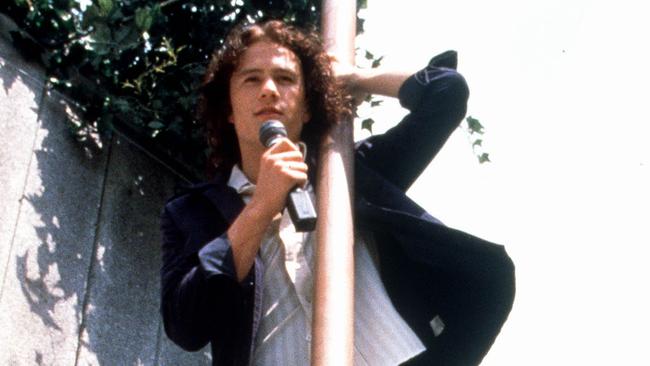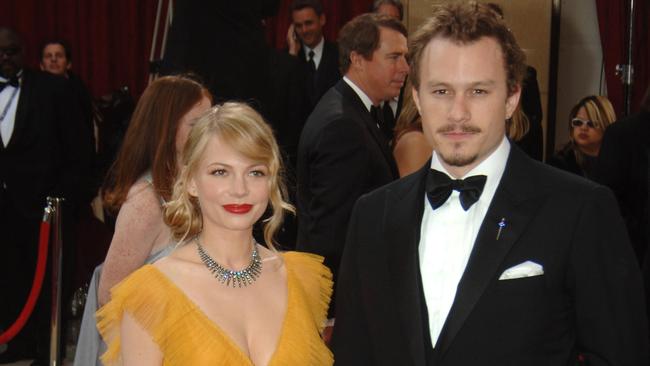Inside the final manic days and sleepless nights of Heath Ledger
HE WOULD sleep “zero or two hours” a night, and was famous for turning up at breakfast unannounced. What was really going on with Heath Ledger?
INITIALLY, Matt Amato was not at all sure his friend Heath Ledger would have wanted to be the subject of a documentary.
“Heath was very private. He didn’t even like any of that behind-the-scenes stuff, like DVD extras,” says Amato, 49, who co-founded a production company, the Masses, with the late actor.
“He really loved being a magician. I can just hear him — he’d be like, ‘Matt, don’t! That takes the fun out of what we do! Let’s just put on the show!’”
But nine years after Ledger’s tragic death at 28 from an accidental prescription drug overdose, Amato agreed to open up about his and Ledger’s longtime friendship in I Am Heath Ledger, premiering on April 23 at the Tribeca Film Festival. It’s a love letter to Ledger from his close friends and family — and a portrait of a budding artist who constantly pushed himself to learn more, do more, live more.
“When we started, we certainly did not know the depth of this incredible archive,” says co-director (with Adrian Buitenhuis) Derik Murray. “We knew Heath had started this company with Matt where he was directing music videos. But we quickly realised this was something that was very deep in Heath’s soul — he had a passion for photography, for film. He essentially documented his life.”
Interspersed with interviews — among them former girlfriend Naomi Watts, musician Ben Harper, directors Ang Lee and Catherine Hardwicke, and actors Djimon Hounsou, Ben Mendelsohn and Emile Hirsch — are countless clips from Ledger’s home videos, dating from his teen years in Perth, Australia, and ending just days before his death in 2008. They were contributed, the filmmakers say, by his loved ones, who felt strongly about showing how creative and fundamentally optimistic Ledger was — a rebuke to rumours of a depressive spiral that precipitated his death.
Filmmaker Amato met the 17-year-old Ledger on his very first night in Hollywood. “I was living with [Ledger’s Roar co-star and girlfriend] Lisa Zane, and she took him by the scruff and brought him to LA and said he was going to be successful. And we had a great time,” says Amato. “The day after he moved in I gave him the script to 10 Things I Hate About You, written by a friend. Which was kind of a lucky thing.”

Ledger made his good friends early and stuck with them, the documentary shows; he also used his fame and fortune to help fellow Aussie actors, whom he’d invite to crash at his mansion indefinitely (to the palpable annoyance of Watts, in one clip). All attest to Ledger’s lust for life and his obsession with bettering himself as an artist, usually by turning his camera on himself.
In one clip, the by-now-recognisable Ledger makes up a plot about searching for a mysterious figure in and around his hotel. “Thank God I made it,” he breathes when he gets back to his room. It’s a weird, goofy moment, and a window into a mind that was constantly thinking in filmic terms.
I Am Heath Ledger also features clips of the actor talking about his own insecurities: “It’s kind of a rule of thumb for me to self-doubt, to think I fooled them,” he says. But he gradually found his footing on-screen — in Monster’s Ball, Brokeback Mountain and his final role in The Dark Knight — and off, as a husband and father and as a member of a larger artistic community that included Amato.
Still, friends say they worried about his inability to turn off his manic energy and sleep, a problem that plagued the actor for years. “He’d sleep either zero or two hours a night for years,” says Murray. “He would call people up in the middle of the night.” Harper tells a story about Ledger’s tendency to show up unannounced for breakfast at six in the morning.
But they all say he was in good spirits after The Dark Knight, which had been rumoured to have turned Ledger’s typical obsessive role-preparation into genuine mental illness.
“This is definitely more the truth than anything else that’s out there,” says Amato, who insisted on getting Ledger’s ex-wife Michelle Williams’ blessing (if not participation) for the project. “She said, ‘We should do something now. Matilda [their daughter] is curious.’

“My only reservation,” he says, “is that, is it as big and beautiful and full of spirit as Heath was? Of course not. But it carries a glimpse in it. And I think he would appreciate the love.”
This story originally appeared in the NY Post.
Originally published as Inside the final manic days and sleepless nights of Heath Ledger
